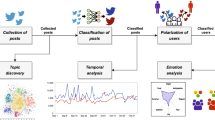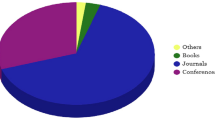Abstract
With the rapid development of the Internet, the Internet has become an important place for producing and spreading public sentiment. Opinion leaders play an important role in leading the public opinion. In this paper, we extract the communities by analyzing the replies of each post in the bulletin board system. Then, an opinion leader community mining method is proposed based on the level structure. Thus, the communities have better overlaps and multiple relations. Also, we analyze the revolution of the opinion leader communities and put forward a time-dividing method. With this method, we divided whole communities into different pieces based on the character of the post and the duration of the time. And we come up with suitable parameters to receive the evolution results of the communities. Finally, our experiments prove the efficiency of the opinion leader community mining method, and we summarize the properties of the opinion leader community in revolution.







Similar content being viewed by others
References
Changai H, Zhu L (2010) The analysis and the evaluation of complicated network software. Digit Libr Forum 5:33–39
Wang Y, Xia H, Yan R (2008) The analysis of the social network and the study of the application cases of NetDraw. Mod Edu Technol 18(4):85–89
Kemighan BW, Lin S (1970) An efficient heuristic procedure for partitioning graphs. Bell Syst Tech 49(2):212–230
Matsumura N, Ohsawa Y, Ishizuka M (2002) Influence diffusion model in text-based communication. Trans Jpn Soc Artif Intell 17:259–267
Zhang J, Ackerman MS, Adamic L (2007) Expertise networks in online communities: structure and algorithms. In: Proceedings of the 16th international conference on World Wide Web. ACM
Zhou H, Daniel Z, Changli Z (2009) Finding leaders from opinion networks. In: IEEE international conference on intelligence and security informatics, 2009. ISI’09. IEEE
Pothen A, Simon HD, Liou K-P (1990) Partitioning sparse matrices with eigenvectors of graphs. SIAM J Matrix Anal Appl 11(3):430–452
Michelle G, Newman MEJ (2002) Community structure in social and biological networks. Proc Natl Acad Sci USA 99(12):7821–7826
Newman MEJ, Michelle G (2004) Finding and evaluating community structure in networks. Phys Rev E 69(2):026113
Palla G et al (2005) Uncovering the overlapping community structure of complex networks in nature and society. Nature 435(7043):814–818
Toyoda M, Kitsuregawa M (2003) Extracting evolution of web communities from a series of web archives. In: Proceedings of the fourteenth ACM conference on hypertext and hypermedia. ACM
Capocci A et al (2005) Detecting communities in large networks. Phys A Stat Mech Appl 352(2):669–676
Palla G, Derényi I, Vicsek T (2007) The critical point of k-Clique percolation in the Erdős–Rényi graph. J Stat Phys 128(1–2):219–227
Palla G, Barabási A-L, Vicsek T (2007) Community dynamics in social networks. Fluctuat Noise Lett 7(03):L273–L287
Palla G, Barabási A-L, Vicsek T (2007) Quantifying social group evolution. Nature 446(7136):664–667
Acknowledgments
This work was supported by the National Basic Research Program of China under Grant No. G2011CB302605, the National Natural Science Foundation of China (NSFC) under Grant No. 61173145, and the National High Technology Research and Development Program of China under Grant No. 2011AA010705.
Author information
Authors and Affiliations
Corresponding author
Rights and permissions
About this article
Cite this article
Zhang, W., He, H. & Cao, B. Identifying and evaluating the internet opinion leader community based on k-clique clustering. Neural Comput & Applic 25, 595–602 (2014). https://doi.org/10.1007/s00521-013-1529-1
Received:
Accepted:
Published:
Issue Date:
DOI: https://doi.org/10.1007/s00521-013-1529-1




